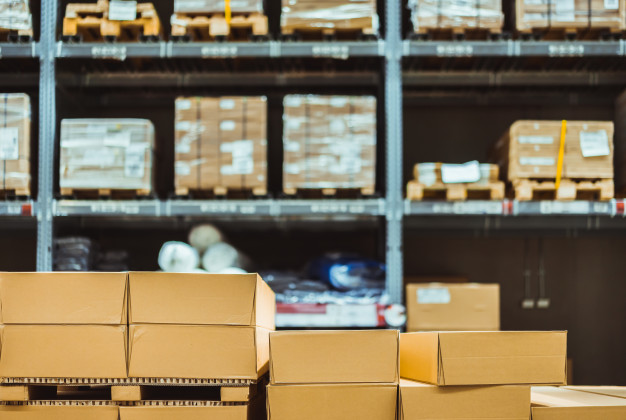Empty grocery shelves, lack of toilet papers, masks, and PPE shortages, vaccine distribution delays- these are some of the most important keywords that define the year 2020. As a reaction to that, the media emphasized, global supply chain disruptions and questions if supply chains were to blame for the shortages. Even though it is very easy to blame global chains and the insufficient supplier inventories, this is an incomplete conflict of interest.
Global Supply chains are a fundamental fundraiser of the modern global economy but require technological innovation and process changes from companies at all levels in the supply chain to function effectively and respond to system shocks like the covid-19.
Rather than creating more inventories, retailers who are leading the global supply needs to improve their supply chain resilience and flexibility. What these changes include are integrating artificial intelligence and machine learning for forecasting and material planning, transport, and real-time communication through the entire supply chain, and decision-making autonomy for managers across the supply chain to quickly react without layers of approval.
To put it in a more simplified manner, the supply chain is the combination of all the manufacturing and distribution steps that are required to convert raw materials into usable products and services for end-users.
Every step in the supply chain, that begins from harvesting raw materials to manufacturing and global distribution is a critical part of ensuring the right product ends up in the hands of the right end-user at the right places and time.
Even though this requires a lot of planning, forecasting, and communication across the supply chain to minimize inventory sitting idle and typing the physical space, assets, and cash flow.

The crisis that we are going through now is a combination of several events- including an inventory build-up as over action to short-term demand and inflexible supply chain.
The production of goods should be streamlined without wasting any resources. This is important for the global economy, which relies on a lean supply chain ecosystem to minimize waste and maximize returns while minimizing inventory turnover times. A consequence of this system is that short-term capacity cannot increase in response to spikes in demand or sudden changes in trends where retailers would otherwise need more products than they have available.
It should be taken into account that the global economy runs on a lean supply chain ecosystem to minimize waste when it comes down to optimization of inventory turnover rates and maximizing return ratios by maintaining high utilization levels across all steps within the manufacturing process as well as distribution channels with minimal buffers throughout. There are always enough materials readily available at every point along the way but also sparingly.
The global economy runs on a lean supply chain ecosystem to minimize waste, optimize inventory turnover, and maximize returns on assets. Every step in the supply chain runs at nearly full capacity without the ability to immediately increase short-term manufacturing or distribution capacity, yet retailers expected their supply chains to nimbly shift capacity without increasing costs.
When COVID-19 stay-at-home orders closed office buildings, the factories making industrial toilet paper lost orders while the factories making home-use toilet paper got overwhelmed with new orders. The former started bleeding cash and laid off employees, while the latter needed months to invest in new machines, buildings, and staff to increase capacity without a guarantee of business post-pandemic. This happened at every step in the supply chain.
This leads us back to the original question of the modern supply chain system is fundamentally broken. Although some companies with extended inventory positions were able to benefit during this pandemic, it’s partly by chance that they had an inventory of in-demand products.
It’s unfortunate to see so many companies being forced into bankruptcy filings. It isn’t economically viable for anyone in the supply chain, from manufacturers all of the ways down to retailers and even producers of raw commodities like crude oil or retail clothing, not to invest in extra capacity and inventory without compensation; moreover, this prevents quick reactions when a disruption happens like an epidemic that could wipe out our stock quickly on staple groceries.
It is important for any company involved with manufacturing goods such as staples or housing rental cars, clothes, etc., to have enough excess capacities available so they can react if there are sudden disruptions caused by pandemics among other things which would make it impossible otherwise.
Instead of building up inventory in the hopes that someone will need those products in the future, firms should focus on increasing their supply chain flexibility and resilience. In traditional supply chains, every change to customer demand requires a six-month transition from industrial toilet paper rolls to personal ones at each step along the way; however resilient and flexible suppliers can shorten this reaction time as well as reduce costs when changes are necessary. We see one great example with Ford and General Motors who have been able to react quickly during times of high demand for cars by adding additional shifts or production lines accordingly without having large reserves sitting around vacant collecting dust.
The desire for a resilient and flexible supply chain is nothing new. However, the 21st century has brought with it an increased need for companies to expedite this process due to increasingly unpredictable market conditions in our globalized world. For example, we have seen that natural disasters can cause massive disruptions at any point on the production line from raw materials straight through to finished goods retailing shelves around the globe; these events require not only swift action but also sustained response by suppliers across countries borders or within close proximity of one another – think about Hurricane Sandy’s effect on New York City’s infrastructure as just one recent example!
To be able to thrive in today’s competitive business environment means incorporating predictive analytics which will allow you insight into your inventory needs before.
 Start using ZapInventory today
Start using ZapInventory today
